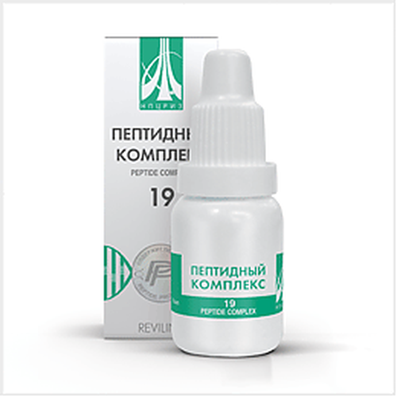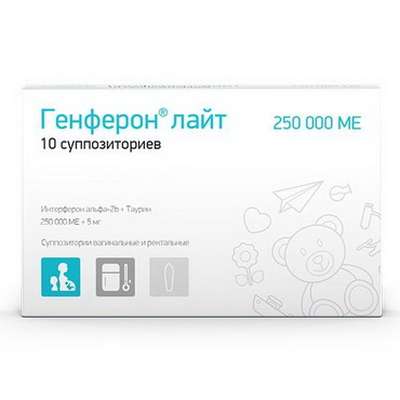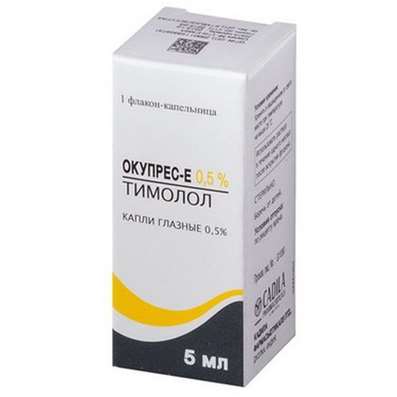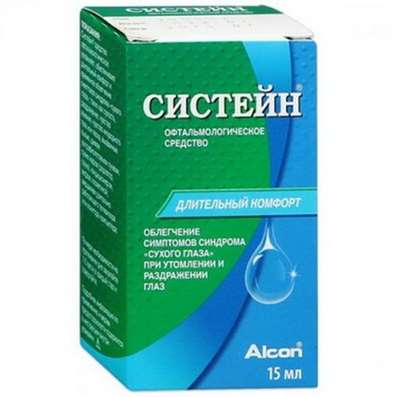Instruction for use: Phenorelaxan
I want this, give me price
Trade name of the drug – Phenorelaxan
Active substance: Bromdihydro-chlorphenyl-benzodiazepine (Bromdihydro-chlorphenyl-benzodiazepinum)
Chemical rational name:7-Bromo-5- (2-chlorophenyl) -1,3-dihydro-2H-1,4-benzodiazepin-2-one
Dosage Form: tablets, solution for injection
Composition active substance - tablets:
Bromdihydro-chlorphenyl-benzodiazepine - P(based on 100% basis) 0.5 mg/ 1 mg/ 2.5 mg
Excipients: lactose (milk sugar); potato starch; Povidone (Kollidon 25); calcium stearate; talc
in blisters of 10 pcs .; In the paper cartons five packs.
Solution for intravenous or intramuscular administration
Bromdihydro-chlorphenyl-benzodiazepine – 1 mg.
Excipients: povidone (polyvinylpyrrolidone, low-molecular weight clinical) - 9 mg; glycerine (glycerol) - 100 mg; sodium bisulfite (sodium metabisulfite) - 2 mg; Tween 80 (polysorbate 80) - 50 mg; 1M sodium hydroxide solution - to pH 6-7,5; Water for injection - up to 1 ml
in neutral glass ampoules of 1 ml in blisters of PVC film 5 vials; In the paper cartons 2 packages complete with lancet ampulnam; or in a cardboard box of 10 vials (with lancet ampoule). When using vials with a point or ring fracture scarifier not invest.
Description of Phenorelaxan
Tablets: white plano-cylindrical shape with a chamfered.
Solution for in / and the / m: clear, colorless or slightly colored liquid.
Pharmacotherapeutic group: Anxiolytic (tranquilizer)
ATX Code
N05BX Anxiolytics other
The nosological classification (ICD-10)
F29 Inorganic psychosis Unspecified: Hallucinatory-delusional disorders; Hallucinatory-delusional syndrome; substance-induced psychosis; Manic-delusional disorders; Manic chronic psychosis; Manic psychosis; Acute psychosis; paranoid psychosis; Paranoid psychosis; Subacute psychosis; presenile psychosis; Psychosis; Psychosis intoxication; paranoid psychosis; Psychosis in Children; Childhood Psychosis; Psychomotor agitation in psychosis; Reactive psychosis; Chronic psychoses; Chronic hallucinatory psychosis; Chronic psychosis; Chronic Psychotic Disorder; schizophrenic psychosis.
F40 Phobic anxiety disorders: Obsessive fears; Anxiety neurosis; anxiety neurosis; Night terrors; Acute Anxiety Disorder; Syndrome of paroxysmal fear; state of fear; Fear; Phobias; phobic disorders; Phobia; Feeling of fear.
F40.9 Phobic anxiety disorder, unspecified: Obsessive fear; Anxiety neurosis; Neurosis of anxiety; Acute anxiety disorder; Syndrome of paroxysmal fear; State of fear; Phobias; Phobic disorders; Feeling of fear
F41.9 Anxiety disorder, unspecified: Severe anxiety; neurosis-like symptoms; neurosis-like disorder; neurosis-like state; Neurosis with anxiety symptoms; Neurosis with anxiety; Neurotic disorders with anxiety syndrome; The acute situational stress and anxiety; The acute situational stress anxiety; Acute anxiety attack; Depressed mood with anxiety elements; Psychopathy with a predominance of anxiety and worry; Sudden anxiety; Situational Anxiety Disorder; An anxiety condition; Soest; Anxious-delirium; Disturbingly delusional component; anxiety; Anxiety; anxiety disorder; Anxiety disorders; Anxiety disorders in neurotic and neurosis-like states; Anxiety syndrome; Chronic neurotic anxiety; Sense of anxiety.
F45.2 Hypochondriacal disorder: Asthenic-hypochondriac phenomena; Hypochondriacal-senesto-pathic syndrome; hypochondriacal disorder; hypochondriacal neurosis; Hypochondriacal and asthenic-hypochondriac state; Hypochondria; Senesto-hypochondriacal disorders; Senesto-hypochondriacal disorder.
F48.9 Neurotic disorder, unspecified: Secondary neurotic symptom; Other neurotic state; Neurosis; Neurosis with increased irritability; Neuroses; Neuroses of all kinds; Neuroses with inhibition; neuroses of the heart; Neurotic disorders in alcoholism; Neurotic disorders with inhibition; Neurotic disorders with anxiety syndrome; Neurotic reactions; Neurotic symptoms of alcoholism; Neurotic state; The neurotic syndrome; neurotic disorders; The attack of neurological dysfunction; School neurosis; Emotional stress.
F60.2 antisocial personality disorder: The antisocial personality; Psychopathic personality; Psychopathy; Psychopathy excitable type; Psychopathy and psychopathic state; Psychopathy hysterical type; Psychopathy with a predominance of anxiety and worry; Inhibited personality.
F60.3 Emotionally unstable personality disorder: Mood changes; mood variability; mood lability; Mood disorders; Mood disorders; Instability emotional background; mood swings; Psychic lability; mood disorders; Mixed emotional disorders, depressed mood; Status of emotional stress; The deterioration of sentiment; Emotional lability; Emotional tension; Emotional instability; Emotional instability; Emotional shut off; Emotional detachment.
F95 Tics: Children tick; Nervous tics in children.
G25.9 Extrapyramidal and movement disorder, unspecified: bradykinesia; Restlessness; Movement disorders; Meiji syndrome; Muscle rigidity Muscle spasticity; Muscle tension; Pyramidal disorder; The defeat of the pyramidal tract; The rigidity of the muscles; Extrapyramidal syndrome; Spastic paralysis; Extrapyramidal hyperkinesia.
G40.0 localized (focal) (partial) idiopathic epilepsy and epileptic syndromes with seizures with focal beginning: Temporal lobe epilepsy; Temporal seizures; The partial form of epilepsy; Partial epilepsy; Partial seizures; Partial seizures; Partial seizures; The partial tonic-clonic seizure; Partial seizure; The partial epileptic seizure; Focal epilepsy; Partial seizures; Focal seizures; Partial seizures.
G40.8 Other specified forms of epilepsy: Alcohol epilepsy; Local forms of epilepsy; Myoclonic epilepsy; Myoclonus epilepsy; Juvenile myoclonic epilepsy.
G47.0 Disorders of falling asleep and maintaining sleep [insomnia]: Insomnia; Insomnia, especially difficulty falling asleep; desynchronosis; Prolonged sleep disturbance; Difficulty falling asleep; Short-term and transient insomnia; Short-term and chronic sleep disorders; Short or shallow sleep; Violation of sleep; Disturbed sleep, especially in the phase of falling asleep; Infringements sleep; sleep disturbances; Neurotic sleep disturbance; Shallow superficial sleep; shallow sleep; Poor quality of sleep; Night awakening; sleep Pathology; Postsomnic violation; transient insomnia; Trouble falling asleep; Early awakening; Early morning awakening; Early awakening; sleep disorder; somnipathy; persistent insomnia; difficult to fall asleep; difficulty falling asleep; Difficulty falling asleep in children; persistent insomnia; Worsening sleep; Chronic insomnia; Frequent night and / or early morning awakening; Frequent nocturnal awakening and a sense of the depth of the non-sleep; Night waking.
G90 Disorders of autonomic [autonomous] nervous system: angiodystonia; vasovegetative manifestations; vasomotor dystonia; vegetative dystonia; autonomic dysfunction; vegetative lability; Vegetative-vascular disorders; autonomic dysfunction; Vegetative-vascular dystonia; Vegetative-vascular disorders; vasoneurosis; vegetative-vascular disorders; Dystonia vegetovascular; Dystonia neurocirculatory; neuro disorder; Cardiopsychoneurosis; Neurocirculatory dystonia of hypertensive type; Primary neurovegetative syndrome; The syndrome of vegetative dystonia.
R25.8.0 hyperkinesia: hyperkinesia rheumatoid; hyperkinesia trochaic; Hyperkinesia central origin; hyperkinesia; Social tremor.
R45.0 Nervousness: Internal voltage; Voltage; voltage nervous; tension; nervous disorders; tearfulness; Mental stress; emotional stress; Psycho-emotional tension in stressful situations; The reactions of nervous tension; State voltage; State of tension; Condition of permanent mental stress; stress; The feeling of inner tension; Emotional tension.
R45.4 Irritability and anger: tantrum; Anger; Dysphoria; Neurosis with increased irritability; exasperation; Increased irritability; Increased irritability of the nervous system; Irritability; Irritability with nervousness; Irritability with psychotic disorders; The symptoms of irritability.
Pharmacological Properties of PhenorelaxanPharmachologic effectMode of action - Anxiolytic (tranquilizer) benzodiazepine.
Mode of action - an anticonvulsant, anxiolytic, muscle relaxant, hypnotic, sedative.
Pharmacodynamics
It increases the inhibitory effect of GABA in the transmission of nerve impulses. It stimulates benzodiazepine receptors located in the allosteric center of postsynaptic GABA receptors ascending activating reticular formation of the brain stem and lateral horn neurons of the spinal cord; reduces the excitability of the subcortical structures of the brain (the limbic system, thalamus, hypothalamus), polisinapticheskie inhibits spinal reflexes.
The anxiolytic effect is due to the influence on the amygdala of the limbic system and manifests itself in the reduction of emotional stress, easing anxiety, fear, anxiety.
Sedation due to the influence on the reticular formation of the brain stem and the nonspecific thalamic nuclei and manifested a decrease in symptoms of neurotic origin (anxiety, fear).
On the productive psychotic symptoms genesis (acute delusional, hallucinatory, affective disorders) has practically no effect, it is rarely observed decrease in affective intensity, delusional disorders.
Hypnotic effects associated with inhibition of the cells of the reticular formation of the brain. It reduces the impact of emotional, autonomic and motor stimuli that disturb sleep.
Anticonvulsant action is realized by increasing presynaptic inhibition suppresses the spread of seizure pulse, but does not eliminate the excited state of the hearth.
Central muscle relaxant effect is due to inhibition of polysynaptic spinal afferent inhibitory ways (to a lesser extent and monosynaptic). Perhaps, and direct inhibition of motor nerve and muscle function.
Pharmacokinetics
Pills
After oral administration, is well absorbed from the gastrointestinal tract, TCmax - 1-2 hours, it is metabolized in the liver.. T1 / 2 -. 10/06/18 hours Write mainly kidneys as metabolites.
Solution for in / and the / m
Widely distributed in the body. It is metabolized in the liver. T1 / 2 from the body 6 to 10-18 hour excretion of the drug is mainly through the kidneys as metabolites.
Indications for Phenorelaxan
neurotic, neurosis, psychopathic and psychopathic and other state (irritability, anxiety, nervousness, emotional lability);
reactive psychosis and senestopaticheski-hypochondriacal disorders (including those resistant to the action of other anxiolytic drugs (tranquilizers);
autonomic dysfunction and sleep disorders;
prophylaxis of conditions of fear and emotional stress;
as an anticonvulsant - temporal and myoclonic epilepsy;
in neurological practice - hyperkinesis, tics, muscle rigidity, autonomic lability.
Contraindications for Phenorelaxan
hypersensitivity (including other benzodiazepines); coma; shock; myasthenia gravis; angle-closure glaucoma (acute onset or predisposition); acute alcohol poisoning (with the weakening of vital functions), narcotic analgesics and hypnotics; Severe COPD (possibly increasing respiratory failure); acute respiratory failure; severe depression (suicidal tendencies may emerge); pregnancy (I term); lactation; childhood and adolescence to 18 years (the safety and effectiveness are not determined).
Precautions: hepatic and / or renal failure, cerebral and spinal ataxia, drug dependency history; the propensity to abuse drugs; organic brain disease, psychosis (possible paradoxical reactions), hypoproteinemia, sleep apnea (or suspected) patients of advanced age.
Pregnancy and breast-feeding
The gestation period is only used for emergencies. It has a toxic effect on the fetus and increase the risk of birth defects when used in the I trimester of pregnancy. Therapeutic dose in the later stages of pregnancy can cause depression of the central nervous system of the newborn. The constant use during pregnancy may lead to physical dependence with the development of withdrawal symptoms in the newborn.
Children, especially at a younger age, are very sensitive to the CNS depressant effects of benzodiazepines.
Using just before birth or during labor may cause neonatal respiratory depression, decreased muscle tone, hypotension, hypothermia, and the weakening of the act of sucking (flaccid baby syndrome).
Phenorelaxan Dosage and Administration
Tablets: inside.
When sleep disorders - 0.25-0.5 mg for 20-30 minutes before bedtime.
For the treatment of neurotic, psychotic, initial dose - 0.5-1 mg 2-3 times a day. After 2-4 days, taking into account the efficacy and tolerability, the dose can be increased to 6.4 mg / day.
In severe agitation, fear, anxiety, treatment is initiated with a dose of 3 mg / day, quickly increasing the dose to produce a therapeutic effect.
In the treatment of epilepsy - 2.10 mg / day.
For the treatment of alcohol withdrawal - 2.5-5 mg / day.
The average daily dose - 1.5-5 mg, it is separated into 2-3 doses, usually 0.5-1 mg in the morning and afternoon, and 2.5 mg at night. In practice, in neurological diseases with a muscular hypertonicity - 2-3 mg of 1 or 2 times per day.
The maximum daily dose - 10 mg.
In order to avoid the development of drug dependence at course treatment duration of application Phenorelaxan, like other benzodiazepines, it is 2 weeks (in some cases the duration of treatment can be increased up to 2 months).
When you remove the drug dose is reduced gradually.
Solution for in / and the / m: / m or / in (bolus or infusion).
For quick relief of fear, anxiety, psychomotor agitation, as well as autonomic epileptic and psychotic states, the initial dose - 0.5-1 mg (0.5-1 ml of 0.1% solution), the average daily dose - 3-5 mg in severe cases - to 7-9 mg.
When status epilepticus and serial seizures introducing drug / m or / in, starting with a dose of 0.5 mg.
For the treatment of alcohol withdrawal - a / m or / in a dose of 2.5-5 mg per day.
In practice, in neurological diseases with increased muscle tone - / m to 0.5 mg of 1 or 2 times per day. To pre / in slowly introduced 0.003-0.004 g (3-4 ml of 0.1% solution).
The average daily dose - 1.5-5 mg. The maximum daily dose - 10 mg.
After achieving sustainable therapeutic effect, it is advisable to go to the reception of the oral dosage form of the drug.
In order to avoid the development of drug dependence at course treatment duration of application Phenorelaxan, like other benzodiazepines, it is 2 weeks. But in some cases, the duration of treatment can be increased to 3-4 weeks.
When you remove the drug dose is reduced gradually.
Side effect of Phenorelaxan
Pills
Sometimes there are memory problems, concentration, coordination (especially at higher doses), drowsiness, muscle weakness, ataxia, sometimes perhaps paradoxical excitement, dizziness, headache, dry mouth, nausea, diarrhea, menstrual disorders, decreased libido, dysuria , skin rash, pruritus.
With prolonged use (particularly in high dosage) - habituation, drug dependence.
Solution for in / and the / m
From the nervous system: at the beginning of treatment (particularly in elderly patients) - drowsiness, fatigue, dizziness, impaired concentration, ataxia, disorientation, mental retardation and motor reactions, confusion; rarely - headache, euphoria, depression, tremors, memory loss, poor coordination of movements (particularly at high doses), depressed mood, dystonic extrapyramidal reactions (uncontrolled movements, including eye), asthenia, myasthenia gravis, dysarthria; very rarely - paradoxical reaction (aggressive outbursts, agitation, anxiety, suicidal tendencies, muscle spasms, hallucinations, anxiety, sleep disturbance).
From the side of hematopoiesis: leukopenia, neutropenia, agranulocytosis (chills, pyrexia, sore throat, unusual tiredness or weakness), anemia, thrombocytopenia.
From the digestive system: dry mouth or salivation, heartburn, nausea, vomiting, loss of appetite, constipation or diarrhea; abnormal liver function, increased activity of hepatic transaminases and alkaline phosphatase, jaundice.
From the urogenital system: urinary incontinence, urinary retention, renal dysfunction, decreased or increased libido, dysmenorrhea.
Allergic reactions: skin rash, pruritus.
Effect on the fetus: teratogenicity (especially the I trimester), central nervous system depression, respiratory failure and suppression of sucking reflex in infants whose mothers took the drug.
Other: addiction, drug dependency, lowering blood pressure; rarely - blurred vision (diplopia), weight loss, tachycardia. With a sharp decrease in dose or discontinuation - withdrawal symptoms (sleep disorders, dysphoric reactions, spasm of smooth muscles of internal organs and skeletal muscles, depersonalization, increased sweating, depression, nausea, vomiting, tremor, a disorder of perception, including hyperacusis, paresthesia , photophobia, tachycardia, convulsions, rarely - psychotic reactions).
Local reactions: phlebitis or venous thrombosis (redness, swelling or pain at the injection site).
Overdose of Phenorelaxan
Pills
Symptoms: severe drowsiness, prolonged confusion, decreased reflexes, prolonged dysarthria, nystagmus, tremor, bradycardia, dyspnea or shortness of breath, decreased blood pressure, coma.
Treatment: gastric lavage, activated charcoal. Symptomatic therapy (maintenance of respiration and blood pressure), administration of flumazenil (in the hospital). Hemodialysis is ineffective.
Solution for in / and the / m
Symptoms: moderate overdose - increased therapeutic effect and side effects; if a large overdose - marked depression of consciousness, cardiac and respiratory activity.
Treatment: Control of vital functions, maintaining respiratory and cardiovascular activity, symptomatic therapy. As antagonists myo-relaxant Phenorelaxan recommended action of strychnine nitrate (injection 1 ml 0.1% 2-3 times a day solution). As a specific antagonist flumazenil can be used (aneksat) - / v (a 5% solution of glucose (dextrose) or 0.9% sodium chloride) in an initial dose of 0.2 mg (optionally up to 1 mg).
Interaction
Phenorelaxan compatible with other drugs that cause depression of the central nervous system (hypnotics, anticonvulsants, antipsychotics, and others.), But complex application must take into account the mutual reinforcement of their activities.
Reduces the effectiveness of levodopa in patients with Parkinson's disease.
It may increase the toxicity of zidovudine.
Inhibitors of microsomal oxidation increase the risk of toxic effects.
Inductors microsomal liver enzymes decrease the efficiency.
Increases concentration of imipramine in blood serum.
Antihypertensive agents may increase the severity of blood pressure lowering.
Against the background of the simultaneous appointment of clozapine may increase the respiratory depression.
In addition to tablets: mutual enhancement effect observed with concomitant administration of central muscle relaxants, narcotic analgesics, ethanol.
SPECIAL INSTRUCTIONS for Phenorelaxan
Require special care when assigning Phenorelaxan with severe depression, since the drug can be used for the implementation of suicidal intentions. Caution should use the drug in elderly and debilitated patients.
In renal / hepatic failure and prolonged treatment is necessary to monitor patterns of peripheral blood and liver enzymes.
The frequency and nature of the side effects depend on the individual sensitivity, dosage and duration of treatment. When reducing the dose or discontinuation of Phenorelaxan side effects disappear.
Like other benzodiazepines, it has the ability to cause drug dependency chronic administration in large doses (up to 4 mg / day).
In a sudden discontinuation may experience withdrawal symptoms (depression, irritability, insomnia, sweating, etc.), Particularly during chronic administration (more than 8-12 weeks).
The drug increases the effects of alcohol, so drinking alcohol during treatment Phenorelaxan not recommended.
The efficacy and safety of the drug in patients younger than 18 years have not been established.
Phenorelaxan contraindicated during transport drivers and other persons performing work that requires fast reactions and precise movements.
In addition to tablets
Patients not taking psychoactive drugs earlier, "responsible" for the drug at lower doses compared to patients taking antidepressants, anxiolytics or suffering from alcoholism.
If you have patients with such unusual reactions, as increased aggressiveness, acute state of excitement, anxiety, suicidal thoughts, hallucinations, increased muscle cramps, difficult to fall asleep, shallow sleep, treatment should be discontinued.
Storage conditions of Phenorelaxan
In a dry, dark place at a temperature of 2-25 ° C.
Keep out of the reach of children.
Shelf life of Phenorelaxan
solution for intravenous and intramuscular administration of 1 mg / ml - 2 years.
Tablets 0.5 mg - 3 years.
Tablets 1 mg - 3 years.
Do not use beyond the expiration date printed on the package.
Conditions of supply of Phenorelaxan from pharmacies
On prescription.

 Cart
Cart





